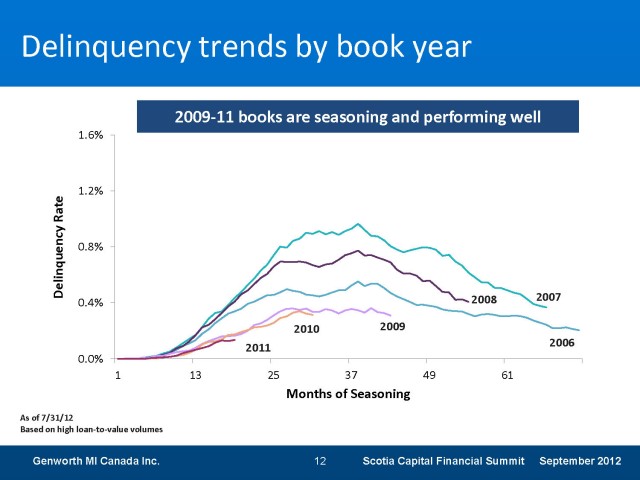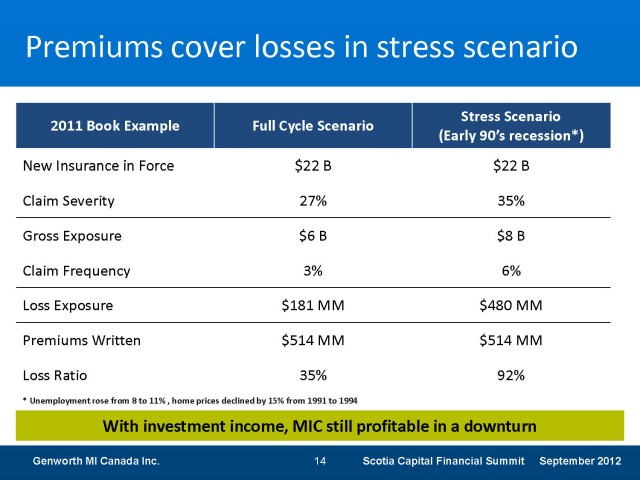Interesting articles on the Globe and Mail (link 1, link 2) from TD and Scotia regarding house prices.
I tend to agree with the general projections that prices will probably compress around 10-15% in the medium term, but there will not be a precipitous crash in the real estate market.
I will give one strong condition to this, however: interest rates must remain at suppressed levels.
Note the following chart (of Vancouver real estate prices):
A parenthetical note is that this chart should be using a logarithmic y-axis as a linear graph distorts relative price movement at higher levels – this is why you never see stock charts scaled on a linear fashion.
Vancouver detached properties are still ridiculously overpriced (and will be a likely exception to the 10-15% rule simply due to the abatement of the well-known foreign capital influx), but I will bring your attention to the chart between 1994 and 2001, where minimal growth was seen in prices in all relevant markets.
It is likely that we’ll see such meandering for the next few years, providing that interest rates remain low.
Real estate has an embedded cash conversion feature – you can rent it out for cash. The value of this rent is higher during low interest rate periods (simply because you can’t sell the real estate asset and invest that cash into risk-free bonds) and lower during high interest rate periods. On a more retail level, if you are spending $2,500 per month to rent a home in Richmond, BC, you will need to earn $30,000 in after-tax dollars to pay for that rental. This is about $35,000 pre-tax after income taxes and statutory deductions. Add in regular living expenses and the like, and a $30,000 after-tax commitment translates into about $42,000 pre-tax earnings for that rental expense (assuming a 30% marginal rate for the middle income bracket in BC).
The equivalent of that $42,000 pre-tax expense is about $1.4 million at a 3% return, $1.05 million at 4%, or $840,000 at 5%. Your risk-free rate on a 10-year Canadian government bond presently is 1.9%.
Note this calculation does not factor in carrying costs (taxes, maintenance, etc.), but is designed to illustrate changes in theoretical valuation between certain interest rates.
In context of equivalent yields and real estate values, one can easily rationalize how in the rest of the country except for some very heated markets (Richmond, Point Grey in Vancouver, etc.) that valuations are where they should be, given the interest rate environment.
People concerned about a change in interest rates that don’t want to go through the hassle of selling their properties have a very simple financial option to hedge themselves against interest rate risk: sell treasury bond futures.




